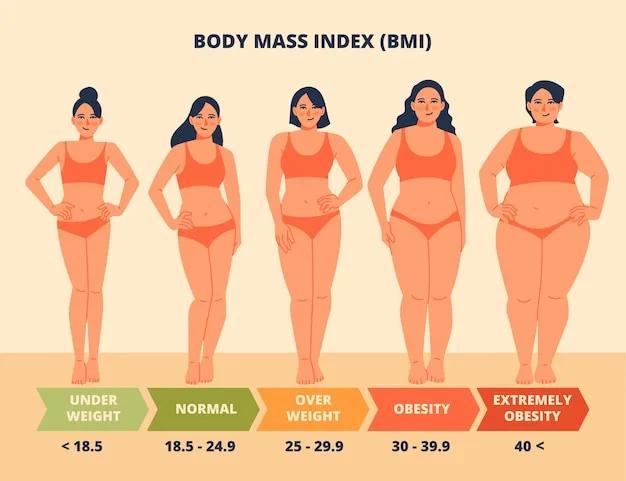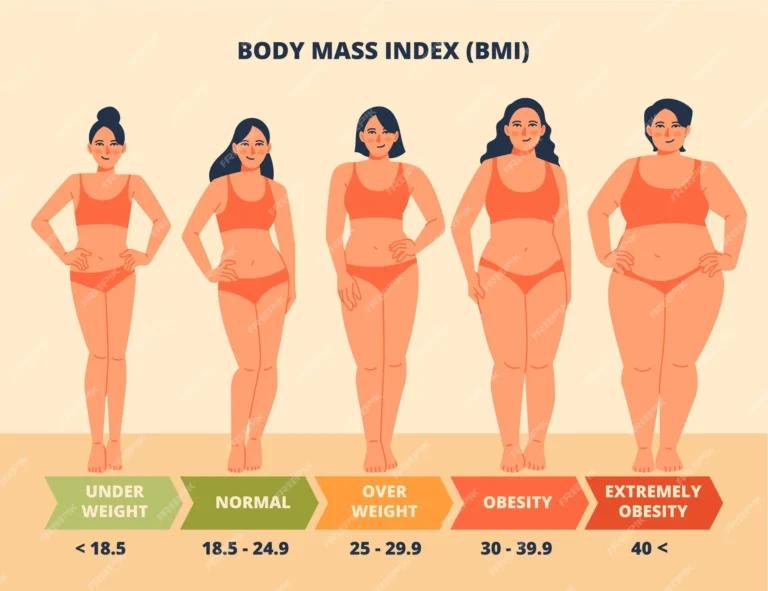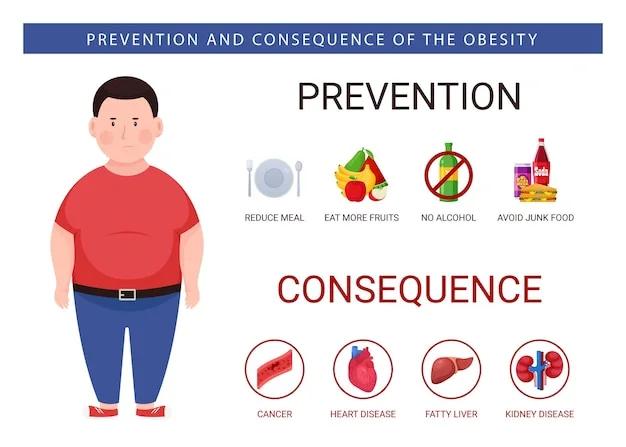
September 17, 2025 (Current Version)
March 28, 2025
When it comes to measuring body weight and assessing health risks, there are several key factors to consider. One such measure is the Body Mass Index (BMI), which provides valuable insights into an individual’s weight status and health status. Understanding BMI and its significance can help individuals take proactive steps towards maintaining a healthy lifestyle. In this comprehensive guide, we will explore the importance of BMI, how it is calculated, its limitations, and its role in assessing health risks. So let’s dive in and discover why BMI is a useful screening tool for measuring body weight.
What is Body Mass Index (BMI)?
Body Mass Index (BMI) is a numerical value calculated from an individual’s height and weight. It provides an estimate of body fat and serves as a reliable gauge of the associated health problems. Calculating BMI is a straightforward process that involves dividing an individual’s weight in kilograms by the square of their height in meters. The resulting value categorizes individuals into different weight status categories, including underweight, normal weight, overweight, and obesity.
BMI provides a general indication of an individual’s weight status, allowing healthcare professionals to assess the potential risks associated with excess body weight. While it is not a perfect measure of health, BMI serves as a useful starting point for evaluating health risks related to weight.
The significance of BMI in assessing health risks
BMI and chronic diseases
Research has shown a strong correlation between BMI and various chronic diseases. Individuals with a higher BMI are at an increased risk of developing conditions such as heart disease, high blood pressure, type 2 diabetes, gallstones, sleep apnea and certain types of cancer. These risks escalate as BMI values move from the normal weight range to overweight and obesity.
BMI and overall mortality
In addition to chronic diseases, BMI is also linked to overall mortality rates. Studies have found a J-shaped curve relationship between BMI and mortality, indicating that both underweight and obese individuals face higher mortality risks compared to those within the normal weight range. Maintaining a healthy BMI within the normal weight range is associated with a lower risk of premature death.
Limitations of BMI
While BMI is a valuable tool for assessing weight status and associated health risks, it does have some limitations. BMI calculations do not differentiate between fat mass and muscle mass, which can lead to inaccurate classifications for individuals with high muscle mass, such as athletes. Additionally, BMI may not be as reliable for certain populations, including older adults and pregnant women. It is important to consider these limitations when interpreting BMI results.
Calculating BMI
Calculating BMI is a simple process that involves dividing an individual’s weight in kilograms by the square of their height in meters. The formula for BMI calculation is as follows:
BMI = weight (kg) / height (m)²
Alternatively, BMI can also be calculated using weight in pounds and height in inches with the following formula:
BMI = (weight (lb) x 703) / height (in)²
Once you have calculated your BMI, it’s essential to understand the different weight status categories and their health implications.
Understanding BMI categories
BMI values fall into different weight status categories, each indicating a specific range of weight and associated health risks. The following are the commonly recognized BMI categories:
Underweight
A BMI below 18.5 is classified as underweight. Individuals in this category may have insufficient body fat, potentially leading to nutrient deficiencies, weakened immune function, and decreased muscle mass. Underweight individuals need to focus on healthy weight gain through proper nutrition and exercise.
Normal weight
A BMI between 18.5 and 24.9 falls within the normal BMI range. Individuals in this category generally have a lower risk of developing weight-related health conditions. However, it’s important to note that BMI alone does not provide a comprehensive assessment of health, and other factors should be considered.
Overweight
A BMI between 25 and 29.9 indicates excess weight status. Individuals in this category have an increased risk of developing chronic diseases, such as diabetes, hypertension, and cardiovascular conditions. Managing weight through lifestyle modifications, including a balanced diet and regular physical activity, is crucial for reducing these risks.
Obesity
Obesity is characterized by a BMI of 30 or higher. This weight category is further divided into three BMI ranges: Class I (BMI 30-34.9), Class II (BMI 35-39.9), and Class III (BMI 40 or higher). Obesity will put you at greater risk of various health conditions, including heart disease, stroke, type 2 diabetes, certain cancers, and respiratory issues. Seeking professional guidance from a healthcare provider and adopting a comprehensive weight management approach is crucial for individuals in this category.
Assessing health risks beyond BMI
While BMI is a valuable tool, it is essential to consider other factors as predictors when assessing an individual’s health risks. Waist circumference, risk factors for obesity-related diseases, and an individual’s overall health profile are important components to evaluate alongside BMI.
Waist circumference
Waist circumference provides additional insights into an individual’s health risks, particularly related to abdominal fat distribution. Excess fat around the waist, also known as central obesity, is associated with an increased risk of developing cardiovascular disease, type 2 diabetes, and metabolic syndrome. Measuring waist circumference is a simple process that involves using a tape measure around the waist, just above the hip bones, after exhaling.
Risk factors for obesity-related diseases
Alongside BMI and waist circumference, several risk factors can contribute to an individual’s overall health risks associated with obesity. These risk factors include high blood pressure (hypertension), high LDL cholesterol (known as “bad” cholesterol), low HDL cholesterol (known as “good” cholesterol), high triglycerides, high blood sugar, ethnicity, a family history of premature heart disease, physical inactivity, and cigarette smoking. Evaluating these risk factors in conjunction with BMI provides a more comprehensive assessment of an individual’s health risks.
The relevance of BMI for different population groups
BMI classifications may not be equally applicable to all population groups due to variations in body composition and disease risks. It is important to consider these differences to ensure accurate assessments and avoid potential disparities in healthcare recommendations.
Ethnic and racial differences
BMI cutoffs for overweight and obesity may need to be adjusted for different ethnic and racial groups. Research has shown that BMI tends to overestimate the risks in Black individuals and underestimate them in those of Asian descent. The World Health Organization (WHO) and the National Institutes of Health (NIH) have recognized these disparities and recommend different BMI cutoffs for specific ethnic groups.
Athletes
BMI may not be an accurate measure for athletes and individuals with high muscle mass. Due to their increased muscle mass, athletes may have a high BMI, which does not necessarily indicate excess body fat or increased health risks. For athletes, it is important to consider body composition assessments and additional health indicators beyond BMI. BMI tends to overestimate body fat percentage in those with a lean body mass (e.g. athletes or bodybuilders).
Older adults
BMI may not be as reliable for older adults due to age-related changes in body composition, including muscle loss and increased fat deposition. Other methods, such as waist circumference and functional assessments, may provide a better understanding of health risks in this population group.
Conclusion
Body Mass Index (BMI) serves as a valuable tool for assessing weight status and associated health risks. It provides an initial indication of an individual’s risk for developing chronic diseases and mortality. However, BMI should not be viewed as the sole determinant of health. Other factors, such as waist circumference, risk factors for obesity-related diseases, and an individual’s overall health profile, should be considered alongside BMI to obtain a comprehensive understanding of health risks.
It is important to recognize the limitations of BMI, particularly in certain population groups. Adjustments for ethnic and racial differences, consideration of muscle mass in athletes, and alternative assessments for older adults contribute to a more accurate evaluation of health risks.
By understanding the significance of BMI, individuals can make informed decisions about their health and take appropriate steps towards achieving and maintaining a healthy weight. Consultation with healthcare professionals can provide personalized guidance based on individual health profiles and facilitate the development of effective strategies for weight management and overall well-being.
Sources
- Body Mass Index (BMI): A Screening Tool Analysis – PMC
- How useful is the body mass index (BMI)? – Harvard Health
- Assessing Your Weight and Health Risk
Medical Disclaimer
NowPatient has taken all reasonable steps to ensure that all material is factually accurate, complete, and current. However, the knowledge and experience of a qualified healthcare professional should always be sought after instead of using the information on this page. Before taking any drug, you should always speak to your doctor or another qualified healthcare provider.
The information provided here about medications is subject to change and is not meant to include all uses, precautions, warnings, directions, drug interactions, allergic reactions, or negative effects. The absence of warnings or other information for a particular medication does not imply that the medication or medication combination is appropriate for all patients or for all possible purposes.











